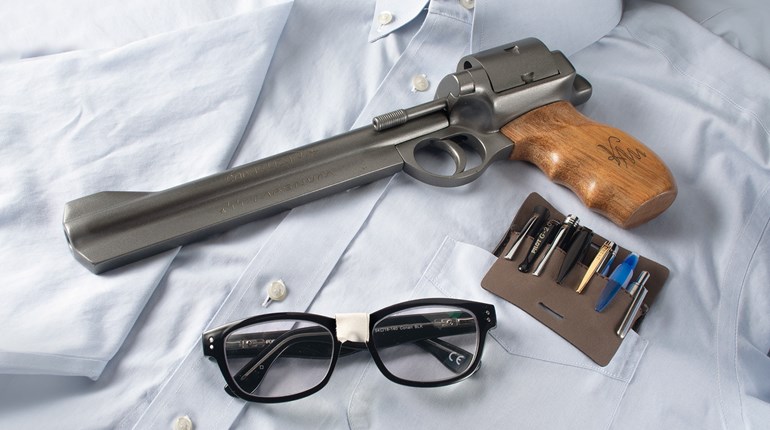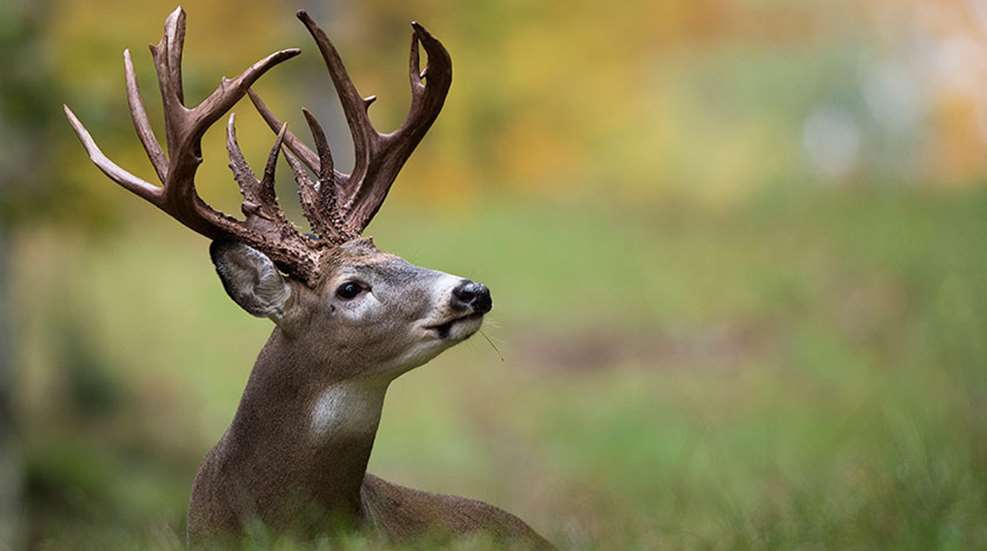
“Oh, East is East, and West is West, and never the twain shall meet.” —Rudyard Kipling
Rudyard Kipling lived for several years in Vermont. He and his wife first settled near Brattleboro along the Connecticut River, where he called his home Bliss Cottage. His first child, Josephine, was born there, “in three-foot of snow on the night of 29 December 1892.” He later built a house in Dummerston, which he named Naulakha. Many of his best known works were written in Vermont, including The Jungle Book and Captains Courageous. However, I clearly took some liberty here: The Ballad of East and West was published in 1889, before Kipling moved to Vermont.
While Kipling was an outdoorsman, it’s not clear if he hunted in the Northeast. By the end of the 19th century, deer populations had been depleted due to market hunting and poor land management. Whitetails were reintroduced to Vermont near the Rutland area with the release of 17 deer in 1878. The population was rebuilding during the years Kipling lived in Vermont from 1892 to 1896, so it’s unlikely he hunted for whitetails.
Still, the famous line about East and West could well have been referencing deer hunting in America. Hunting in the East, particularly the Northeast, is much different than deer hunting in the West, and never the twain shall meet.
Eastern hunting is often defined as “east of the Mississippi River,” which is a huge chunk of real estate. Trying to lump together all Eastern deer hunting is an exercise in foolishness. For example, hunting in South Carolina is much different than hunting in Connecticut.
I am focusing here mostly on the Northeast: New England, New York, Pennsylvania, Ohio and perhaps some surrounding states. There can be a lot of overlap. I know personally that some of the techniques that predominate in the extreme Northeast, such as tracking, have been successful in places like Michigan and Minnesota, so “the East” is not a hard and fast location.
Eastern hunting is more oriented to forested habitat and often deals with the conditions created by a lot of people living and hunting in a given area.
Actually, hunting in the Northeast includes a wide range of techniques and tactics. For example, hunting deer in northern Maine is a much different endeavor than hunting in the more populated states farther south.
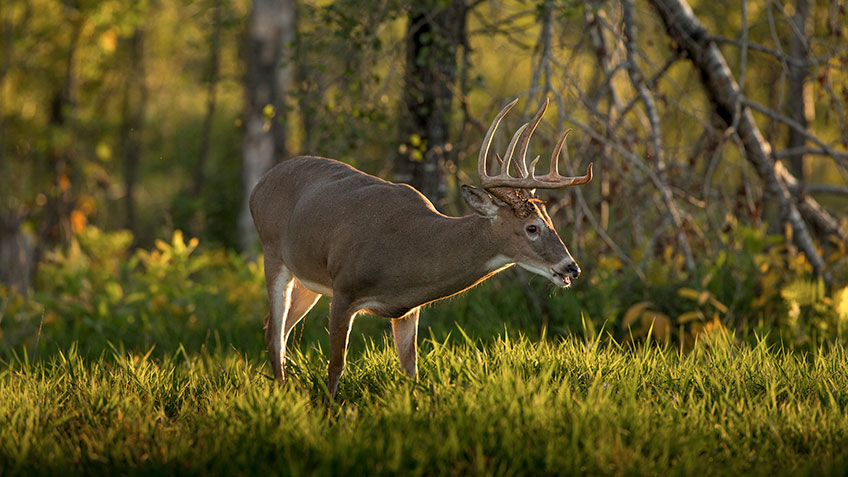
The North Country
In the north woods from Maine to New York, including northern Vermont and New Hampshire, the primary issue is the thin deer populations. The trouble again is often forest management. It would seem that we tend to extremes in forest management and it’s never good for the deer. While much of the land was cleared in the late 19th century, the opposite occurred in the late 20th century.
The hands-off land management attitude that prevailed in a lot of the northern forests through the past several decades has resulted in vast tracts of mature forest, which is poor habitat for whitetails. When coupled with the severe winters, the per-square-mile population of deer can be relatively low.
There is little doubt that the most effective way to hunt the vast woodlands of the North Country is by tracking. Assuming you have snow, of course.
Tracking is a complicated technique. I know this because I have written two rather large books on the subject. But, when you boil it down, it’s simply this: Find the track of a large buck and follow it until you see the deer. Then shoot the deer.
The upside of tracking is that you always have a big buck in front of you. You are not waiting on stand, hoping to beat the odds that a big buck will wander by; he is always right there waiting for you to catch up.
If you lack snow, or simply prefer to hunt from a stand, the key in the North Country is to scout hard before you place a stand. North Country deer often tend to be in groups pocketed into comparatively small sections of land, usually with a lot of empty space between them.
Big bucks may wander from pod to pod during the rut looking for estrus does. That’s one reason you will often find lone buck tracks isolated from areas with a lot of other deer tracks. The one true thing during the rut is the bucks will go where the does are, and the does are usually in those pods of deer.
Find the deer, and then look for buck sign. If you have deer, including bucks, in the area, then look for places to make a stand. Simply going into the woods and putting up a stand or a blind at a place that looks like it should be good will usually result in a frustrating, deer-free hunt.
When I am hunting in the North Country, I often spend the first few days scouting and trying to locate deer to unlock the secrets of their movements. I usually do this when the season is open and I carry my rifle, of course. I try to stay quiet and still-hunt as I scout, so it’s not uncommon to actually shoot a deer while scouting.
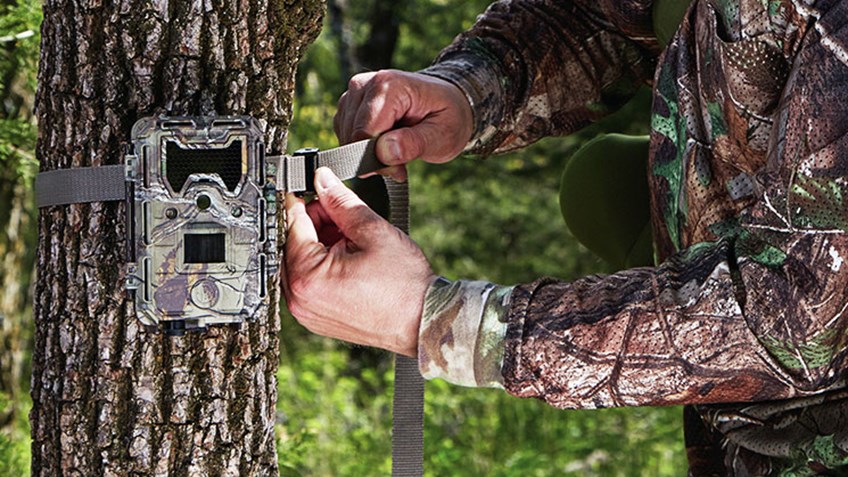
I lean to more traditional scouting tactics, but you may wish to use trail cameras to identify deer movement and to find the bucks in the area. My goal is to find a few stand locations once I have the deer movement figured out, or at least think I do. (Who knows for sure with whitetails?)
Throughout the hunt I usually spend parts of some days continuing to scout. With the changing seasons and the rut, deer movement can be pretty dynamic and prone to change, even day to day. Deer are browsers, and in the North Woods browse is everywhere. That doesn’t create any reason for the deer to concentrate in a given area. But throughout the fall, other food sources will become viable and the deer will zoom in on them, often for a relatively short period of time. Look for localized food sources like beechnuts, acorns (rare in the far North) or wild apples. As these become available the deer may modify their movements to access new food sources.
I know the conventional wisdom is that you should sit all day. But, in the big woods of the Northeast I think you will have better results if you continue to scout and stay flexible about where you are hunting. Hunt peak times from the stand, but take a few hours now and then to check in and see what the deer are doing. In late fall, when most firearm seasons are open, things can change fast. The deer might be focused on a new food source you didn’t know about. A hot doe or two can draw off the bucks you thought you were hunting. In late season an early snowfall can cause the deer to start migrating to their winter yarding habitat.
The key is to stay aware of what the deer are doing and hunt accordingly.
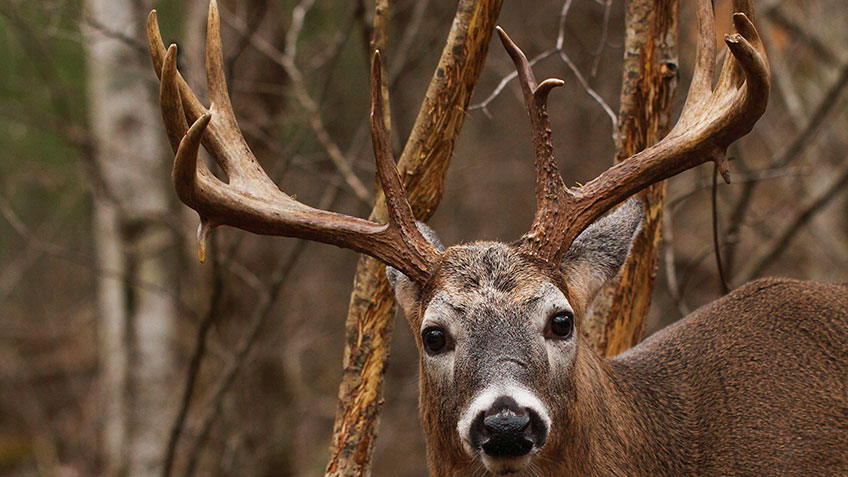
The Rest of the Northeast
The largest contributing factor for hunting deer in much of the rest of the Northeast is human population. This impacts habitat, and the hunting grounds tend to be smaller parcels of land. They are often surrounded by houses, cut off by roads and broken up by the detritus of “human habitat.” The deer in these areas are much more attuned to dealing with human intrusion into the woods. Not just hunters, but other recreational pursuits will bring the deer into contact with humans all year long. The deer behavior will be different than it is in places with little human contact throughout the year.
Human population also will have an impact on the amount of hunting pressure. People tend to hunt relatively close to home, so as a rule, the more populated the area the higher the hunting pressure. If you have private land to hunt you can control the amount of human interaction, but many of us hunt public land, and there is no avoiding the fact that public-land hunting in much of the Northeast means hunting pressure.
During the first day or two of the hunting season, a hunter can do well by moving back away from the popular hunting spots and waiting along the escape routes. Hunter activity during the first few days can keep the deer moving.
Typically, more deer are shot on opening day than any other day in the season. Part of that is because there are more hunters in the woods. Another part is the deer don’t know they are being hunted yet.
Bored hunters are your best asset in these early days of the hunting season. They get out of their stands and wander around. This keeps the deer moving. The deer will try to stay in the thick stuff, but the hunters will often bump them out. The deer will sometimes move locations as the hunters pressure them. A stand in between two thick areas might catch an early-season buck moving from one hidey hole to another.
I like to set up in a place that constricts the deer movement. I look for ponds, beaver dams, rivers or ledges to help funnel the deer movement; anything that blocks their travel and helps to push most of the deer movement through a narrow location.
You can also use other hunters to help funnel the deer. If you know of one or more well-used hunting stands, you can use that to your advantage, particularly if the stand locations are used year after year, as you can be sure the deer know about those stands. They will stay downwind and out of sight to monitor the hunters’ locations. You might catch a buck circling the other hunters and avoiding their locations. Again, look for choke points that narrow the deer’s movement, downwind of the stands. Look for thick brush along the travel routes as the deer will try to stay concealed. A good stand is not about the amount of real estate you can see, it’s about seeing the right real estate. It might be thick and you can’t see much; but remember, that’s why the deer are there.
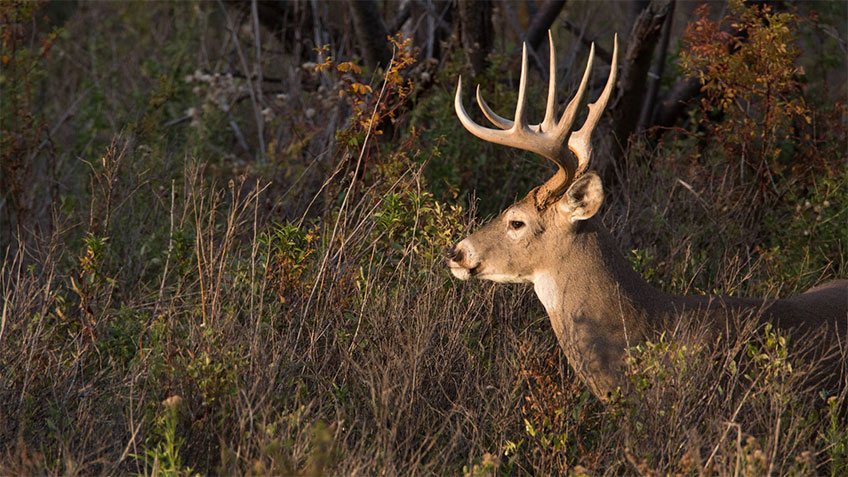
Every article ever written about hunting highly pressured deer on public land advises us to find the buck’s sanctuary. The conventional advice is that it will be a place well away from the roads with thick vegetation or terrain so rough that humans avoid going there.
That’s great advice, but what next? Most experts say hunt the fringes of that area to catch the buck leaving at night or returning in the morning. Great advice, except that once the hunting season is a few days old most mature bucks are nocturnal. If they go past your stand at all, it will be in the dark.
By waiting outside his bedding area you are counting on the buck making a mistake. He may well do that, but if he has a few years on him, odds are he won’t. You may shoot a younger deer, which is fine. Often I am just looking for a legal buck. I have no trouble putting a young and dumb deer in my freezer.
But if you want to hunt the biggest bucks in the area, depending on them to make a mistake is not a productive strategy. Whitetail bucks that have lived three, four or five years in high-pressure areas simply don’t make many mistakes.
Public land with high hunting pressure likely will not hold a large number of older bucks to start with, but there are always a few that have managed to stay alive. If the buck is really experienced and smart, he is going to move off the public land and onto some other place with no hunters. That’s one of the biggest problems with public-land hunting in the Northeast. Bucks can’t read, but they all seem to know posted signs on private property are barriers to hunters and that the other side is safer. Trails leading to posted property that is not being hunted are good stand locations early in the season. This is a great place to catch a buck that is trying to get out of Dodge opening morning. Scout the perimeter of the posted land and you should be able to locate a good escape route or two. Trails with lots of use are good for hunting any legal deer. If the public land holds any older bucks, they will probably pick a less obvious place to cross the boundary. Rather than looking for lots of deer tracks, look for crossing locations with big tracks.
Beyond that, public land that is bordered by posted land that is not hunted is a tough situation. You can try setting up along the boundaries and hope a hot doe or a food source will draw the buck back onto the public land, but that’s not a highly productive way to hunt. In areas where deer movement is not influenced by hunting pressure, this might be a good strategy. However, in most public hunting areas, after the first few days of the hunting season the deer movement and behavior is influenced primarily by hunting pressure. This causes the bucks to eat and breed at night. It’s unlikely a mature buck will leave a safe location during daylight hours.
Knocking on doors to ask permission might work, but the odds are against it. The land is often posted to reserve it for other hunters, or, more likely in today’s society, to keep hunters off entirely. Either way, gaining permission to hunt is not a high probability. You can ask; the worst they can do is say no. But you should fully expect to hear that word. In this case, it’s best to find another buck to hunt.
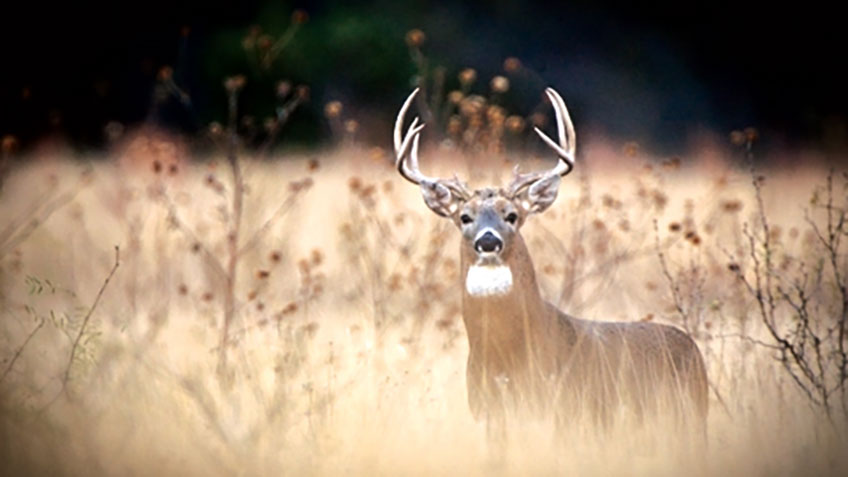
If the public land is large enough, the buck might well be bedding on property you can hunt. I hunt a lot of national forest, which often has huge tracts of land. On lands I hunt each year I much prefer to scout after the season and find the sign of where the deer was hiding during the hunting season. If he survived he will likely be back there next year. If not, another buck will probably take his place. By scouting after the season you don’t have to worry about changing his behavior with your presence.
If that’s not an option, I have found that in high-pressure hunting areas you can get away with carefully scouting a bedding area during hunting season. You may chase out the buck, but the deer almost always returns. He may come right back as these deer are used to human movement and realize they are vulnerable when moving, or he may move to another bedding area that’s close by. But, almost always, he will return in a day or two.
Ever notice that your dog sleeps in the same place all the time? That is his “spot,” it’s where he feels comfortable and safe. Deer are much the same. They have their spots. If you go into a bedding area and find a bunch of rubs, scrapes and beds, you have located one of that buck’s spots. He likes it there and does not want to leave.
I know the experts say never hunt in a bedding area, and in many places that’s good advice, but it’s different on public lands with high hunting pressure. First off, the deer are used to people wandering around and bumping them out of their beds, and they are not going to abandon the bedding area permanently every time somebody wanders by.
Where are they going to go? The woods are full of hunters, and moving creates a high risk of being shot. If they leave the bedding area and do not find another hiding spot quickly, they will have a tag in their ear very soon. Besides, if they were to abandon their bedding area and move on to another, it’s just a matter of time before somebody jumps them out of that one, too. These old bucks are cagey. They might move to another bedding area, but more than likely they will simply let the threat pass and then bed back down near where they were.
If you jump a buck from his bed, backtrack a bit and take a stand. You might catch him trying to sneak back. He will come in downwind so he can determine if you are still there. Think about the direction he went and where he is likely to circle back to this location. Set up downwind of there and wait.
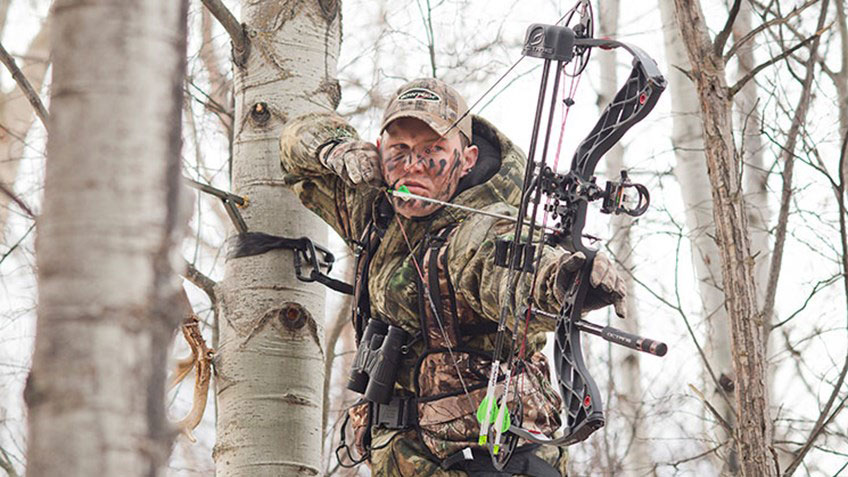
There are a couple of ways to deal with this situation. Both are a bit of a nuclear option so I reserve them for late in the season when there is less to lose. It’s all or nothing and it may well chase the buck out of the area. Or, it may result in you dining on his backstraps for Christmas.
If you have a hunting partner, a low-pressure, one-man drive can work. If you have a pretty good idea where the buck will go when disturbed, one guy can wait there while his partner slowly still-hunts through the bedding area.
The other approach is to place a stand in the heart of his bedding grounds. This works best if you scout after the season and place the stand well in advance of the next season.
You must get into the stand a few hours before daylight and stay at least an hour after dark. That way you are in the stand before the buck arrives and you don’t get out until after he leaves. You may get a day or two if the conditions are right before the buck catches on and fails to return. Or you may shoot him that first morning.
The one thing you should never do when hunting in the East is the same thing everybody else is doing. The deer know it’s pretty easy to “pattern” most hunters. You need to break that cycle and do something different, something the deer are not going to expect. Don’t follow the crowd; become the oddball hunter to get an edge.
Deer Gear: Huntworth Clothing
Come November, nearly 800,000 Pennsylvania residents share a singular goal: getting a buck. Clothing maker Huntworth understands this culture better than most other brands. After all, the company has been headquartered in southwestern Pennsylvania for two decades.
“Deer hunters are our focus,” says Huntworth’s Neal Ash. “We don’t compete with the high-end designer brands. Instead, we make clothing with the features deer hunters want at prices they can afford.” Indeed there’s not a piece in Huntworth’s new Hidd’n line priced above $125, and most of it is less than $100.
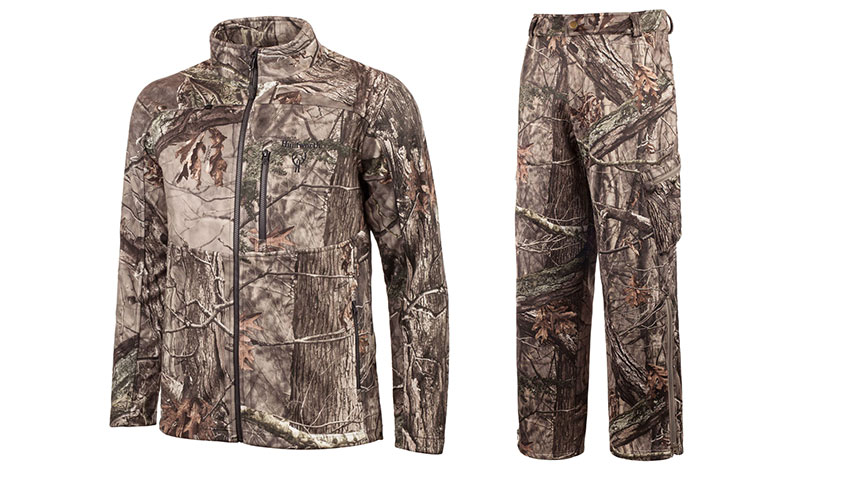
The soft-shell, bonded construction of Hidd’n clothing is virtually silent. While the exteriors of the Mid Weight Bonded Hunting Jacket ($99.99) and Mid Weight Soft Shell Hunting Pant ($69.99) are treated with durable water repellent (DWR), the fabrics remain supple and quiet on stand. The jacket’s In-Velvet (see what Huntworth did there?) low-pile fleece shell is bonded to a waffle-fleece interior treated with Microban antimicrobial agent to reduce scent. Features include five pockets, a safety-harness slot and tapered, articulated arms to ensure range of motion. The pant’s stretchy soft-shell fabric won’t bind when climbing or kneeling. Two zippered cargo pockets hold a rangefinder or sandwiches. Leg zippers extend nearly 16 inches for easy-off/easy-on over boots.
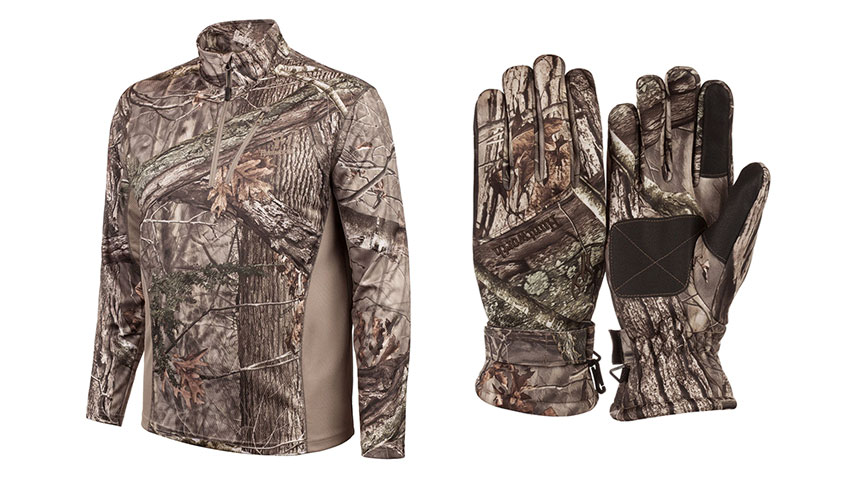
The Light-Weight 1/4-Zip Hunting Shirt ($29.99) is breathable knit fabric treated with scent suppressant. It could serve as a primary top early or as a base layer later. Stealth Heavy Weight Hunting Gloves ($29.99) are plush with a long-pile fleece lining treated with DWR; a HydraShield insert is waterproof and breathable; Grip-tex palm patches and silicon finger patterns ensure a firm hold.
Hidd’n camo combines photo-realistic elements of hardwoods and softwoods—exactly what’s found in Eastern deer woods. The layering of sharp details on a blurred background provides pattern depth to blend in just about anywhere. For more information, go to huntworthgear.com.












